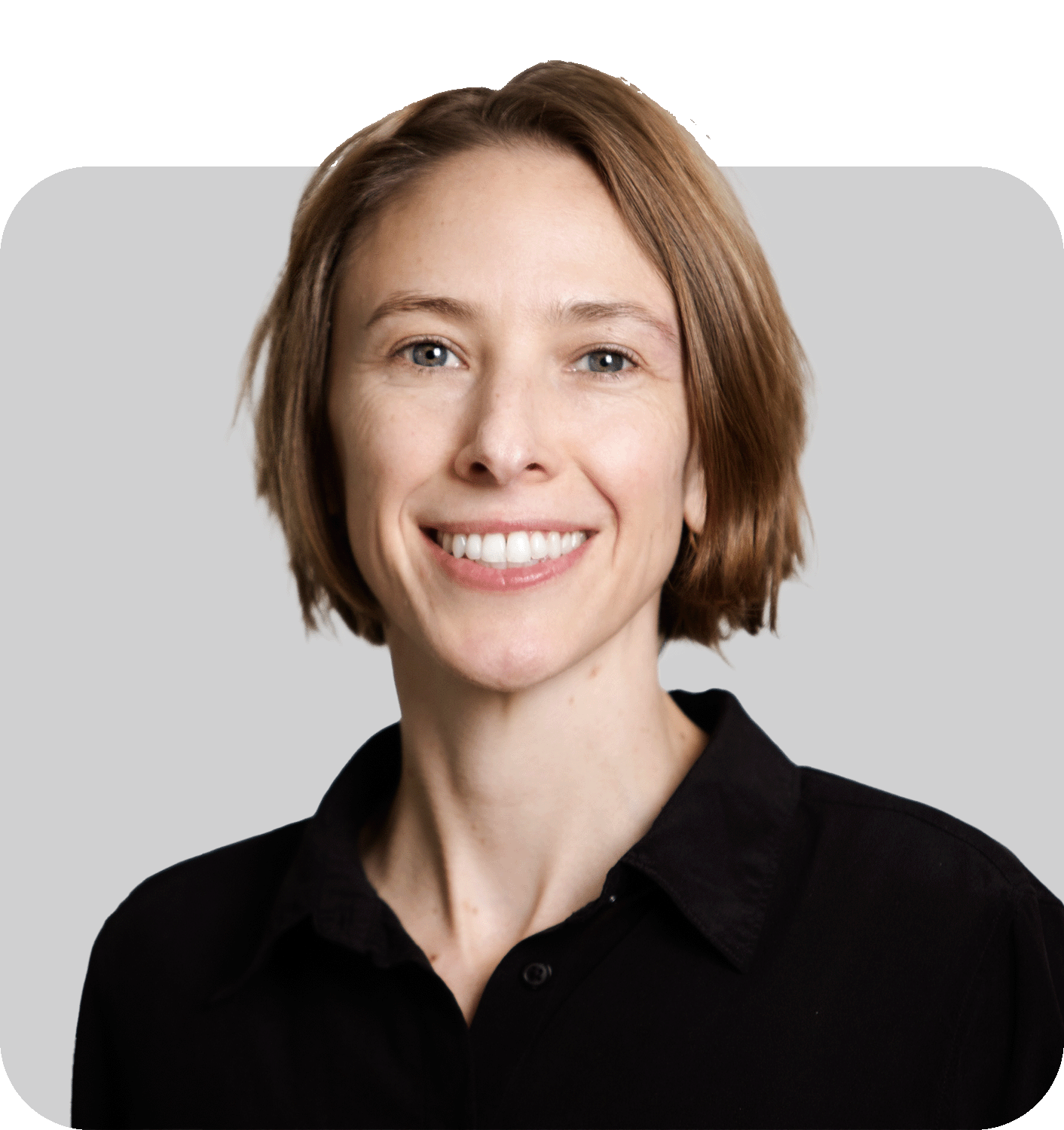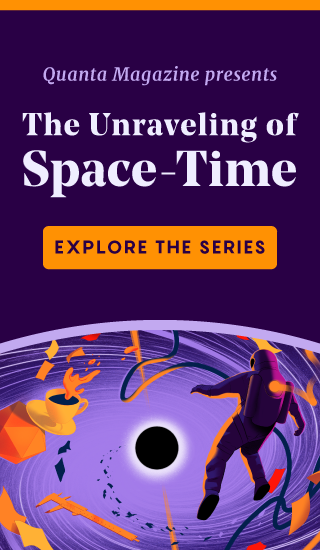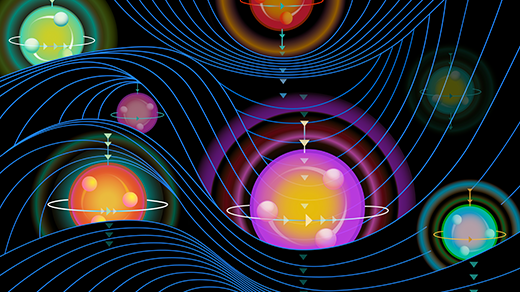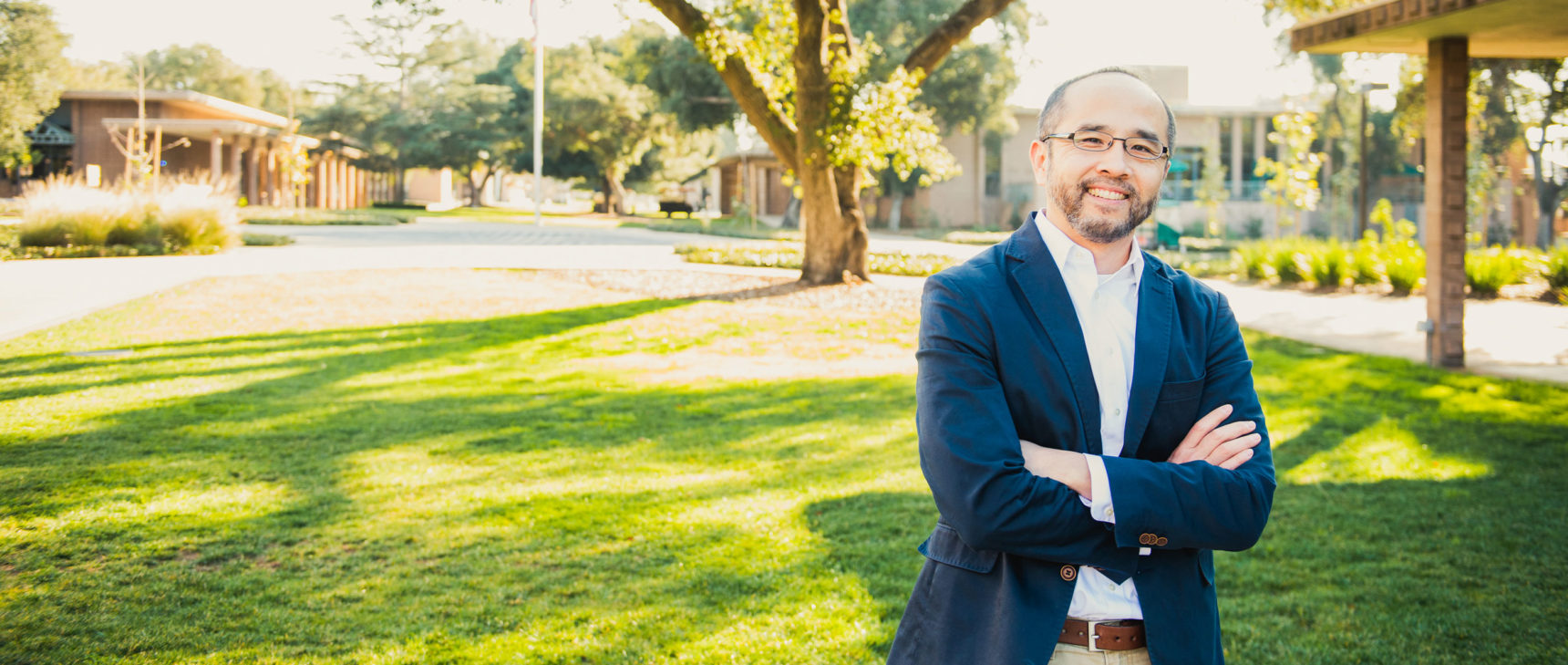Experiment Reaffirms Quantum Weirdness
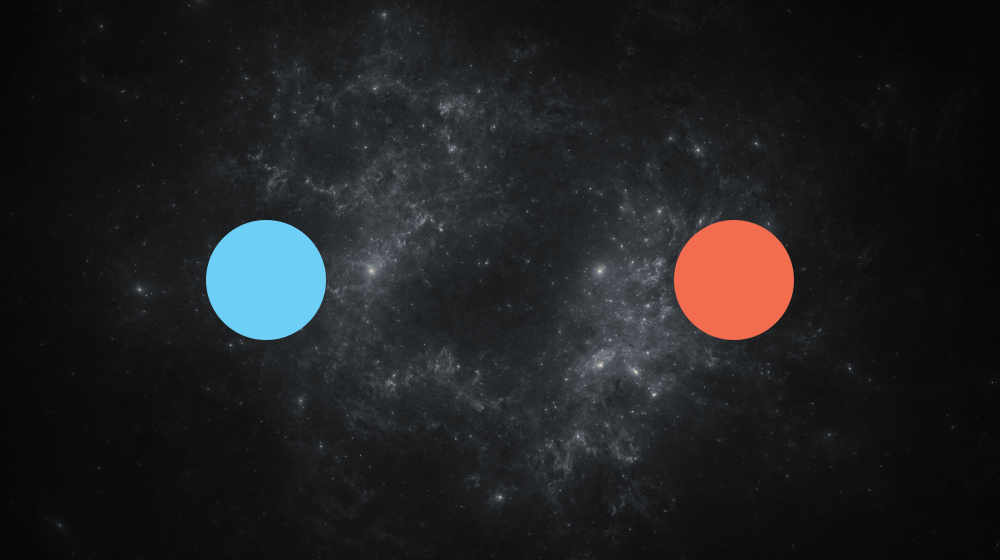
Olena Shmahalo/Quanta Magazine
Introduction
There might be no getting around what Albert Einstein called “spooky action at a distance.” With an experiment described today in Physical Review Letters — a feat that involved harnessing starlight to control measurements of particles shot between buildings in Vienna — some of the world’s leading cosmologists and quantum physicists are closing the door on an intriguing alternative to “quantum entanglement.”
“Technically, this experiment is truly impressive,” said Nicolas Gisin, a quantum physicist at the University of Geneva who has studied this loophole around entanglement.
According to standard quantum theory, particles have no definite states, only relative probabilities of being one thing or another — at least, until they are measured, when they seem to suddenly roll the dice and jump into formation. Stranger still, when two particles interact, they can become “entangled,” shedding their individual probabilities and becoming components of a more complicated probability function that describes both particles together. This function might specify that two entangled photons are polarized in perpendicular directions, with some probability that photon A is vertically polarized and photon B is horizontally polarized, and some chance of the opposite. The two photons can travel light-years apart, but they remain linked: Measure photon A to be vertically polarized, and photon B instantaneously becomes horizontally polarized, even though B’s state was unspecified a moment earlier and no signal has had time to travel between them. This is the “spooky action” that Einstein was famously skeptical about in his arguments against the completeness of quantum mechanics in the 1930s and ’40s.
In 1964, the Northern Irish physicist John Bell found a way to put this paradoxical notion to the test. He showed that if particles have definite states even when no one is looking (a concept known as “realism”) and if indeed no signal travels faster than light (“locality”), then there is an upper limit to the amount of correlation that can be observed between the measured states of two particles. But experiments have shown time and again that entangled particles are more correlated than Bell’s upper limit, favoring the radical quantum worldview over local realism.
Only there’s a hitch: In addition to locality and realism, Bell made another, subtle assumption to derive his formula — one that went largely ignored for decades. “The three assumptions that go into Bell’s theorem that are relevant are locality, realism and freedom,” said Andrew Friedman of the Massachusetts Institute of Technology, a co-author of the new paper. “Recently it’s been discovered that you can keep locality and realism by giving up just a little bit of freedom.” This is known as the “freedom-of-choice” loophole.
In a Bell test, entangled photons A and B are separated and sent to far-apart optical modulators — devices that either block photons or let them through to detectors, depending on whether the modulators are aligned with or against the photons’ polarization directions. Bell’s inequality puts an upper limit on how often, in a local-realistic universe, photons A and B will both pass through their modulators and be detected. (Researchers find that entangled photons are correlated more often than this, violating the limit.) Crucially, Bell’s formula assumes that the two modulators’ settings are independent of the states of the particles being tested. In experiments, researchers typically use random-number generators to set the devices’ angles of orientation. However, if the modulators are not actually independent — if nature somehow restricts the possible settings that can be chosen, correlating these settings with the states of the particles in the moments before an experiment occurs — this reduced freedom could explain the outcomes that are normally attributed to quantum entanglement.
The universe might be like a restaurant with 10 menu items, Friedman said. “You think you can order any of the 10, but then they tell you, ‘We’re out of chicken,’ and it turns out only five of the things are really on the menu. You still have the freedom to choose from the remaining five, but you were overcounting your degrees of freedom.” Similarly, he said, “there might be unknowns, constraints, boundary conditions, conservation laws that could end up limiting your choices in a very subtle way” when setting up an experiment, leading to seeming violations of local realism.
This possible loophole gained traction in 2010, when Michael Hall, now of Griffith University in Australia, developed a quantitative way of reducing freedom of choice. In Bell tests, measuring devices have two possible settings (corresponding to one bit of information: either 1 or 0), and so it takes two bits of information to specify their settings when they are truly independent. But Hall showed that if the settings are not quite independent — if only one bit specifies them once in every 22 runs — this halves the number of possible measurement settings available in those 22 runs. This reduced freedom of choice correlates measurement outcomes enough to exceed Bell’s limit, creating the illusion of quantum entanglement.
The idea that nature might restrict freedom while maintaining local realism has become more attractive in light of emerging connections between information and the geometry of space-time. Research on black holes, for instance, suggests that the stronger the gravity in a volume of space-time, the fewer bits can be stored in that region. Could gravity be reducing the number of possible measurement settings in Bell tests, secretly striking items from the universe’s menu?
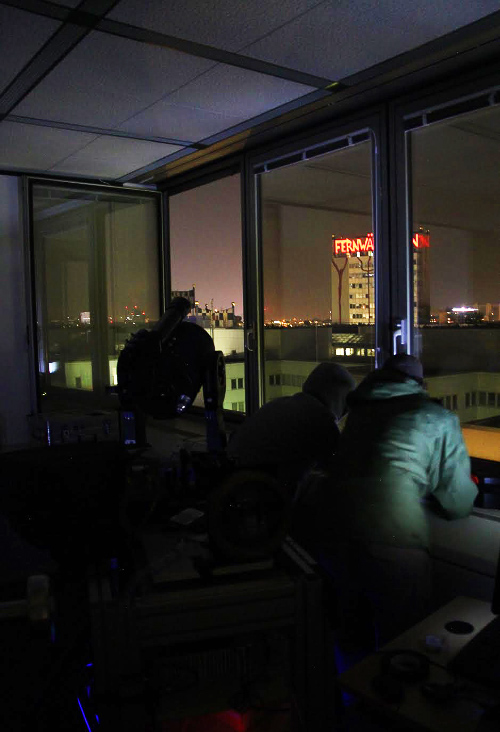
Friedman, Alan Guth and colleagues at MIT were entertaining such speculations a few years ago when Anton Zeilinger, a famous Bell test experimenter at the University of Vienna, came for a visit. Zeilinger also had his sights on the freedom-of-choice loophole. Together, they and their collaborators developed an idea for how to distinguish between a universe that lacks local realism and one that curbs freedom.
In the first of a planned series of “cosmic Bell test” experiments, the team sent pairs of photons from the roof of Zeilinger’s lab in Vienna through the open windows of two other buildings and into optical modulators, tallying coincident detections as usual. But this time, they attempted to lower the chance that the modulator settings might somehow become correlated with the states of the photons in the moments before each measurement. They pointed a telescope out of each window, trained each telescope on a bright and conveniently located (but otherwise random) star, and, before each measurement, used the color of an incoming photon from each star to set the angle of the associated modulator. The colors of these photons were decided hundreds of years ago, when they left their stars, increasing the chance that they (and therefore the measurement settings) were independent of the states of the photons being measured.
And yet, the scientists found that the measurement outcomes still violated Bell’s upper limit, boosting their confidence that the polarized photons in the experiment exhibit spooky action at a distance after all.
Nature could still exploit the freedom-of-choice loophole, but the universe would have had to delete items from the menu of possible measurement settings at least 600 years before the measurements occurred (when the closer of the two stars sent its light toward Earth). “Now one needs the correlations to have been established even before Shakespeare wrote, ‘Until I know this sure uncertainty, I’ll entertain the offered fallacy,’” Hall said.
Next, the team plans to use light from increasingly distant quasars to control their measurement settings, probing further back in time and giving the universe an even smaller window to cook up correlations between future device settings and restrict freedoms. It’s also possible (though extremely unlikely) that the team will find a transition point where measurement settings become uncorrelated and violations of Bell’s limit disappear — which would prove that Einstein was right to doubt spooky action.
“For us it seems like kind of a win-win,” Friedman said. “Either we close the loophole more and more, and we’re more confident in quantum theory, or we see something that could point toward new physics.”
There’s a final possibility that many physicists abhor. It could be that the universe restricted freedom of choice from the very beginning — that every measurement was predetermined by correlations established at the Big Bang. “Superdeterminism,” as this is called, is “unknowable,” said Jan-Åke Larsson, a physicist at Linköping University in Sweden; the cosmic Bell test crew will never be able to rule out correlations that existed before there were stars, quasars or any other light in the sky. That means the freedom-of-choice loophole can never be completely shut.
But given the choice between quantum entanglement and superdeterminism, most scientists favor entanglement — and with it, freedom. “If the correlations are indeed set [at the Big Bang], everything is preordained,” Larsson said. “I find it a boring worldview. I cannot believe this would be true.”
This article was reprinted on TheAtlantic.com.
